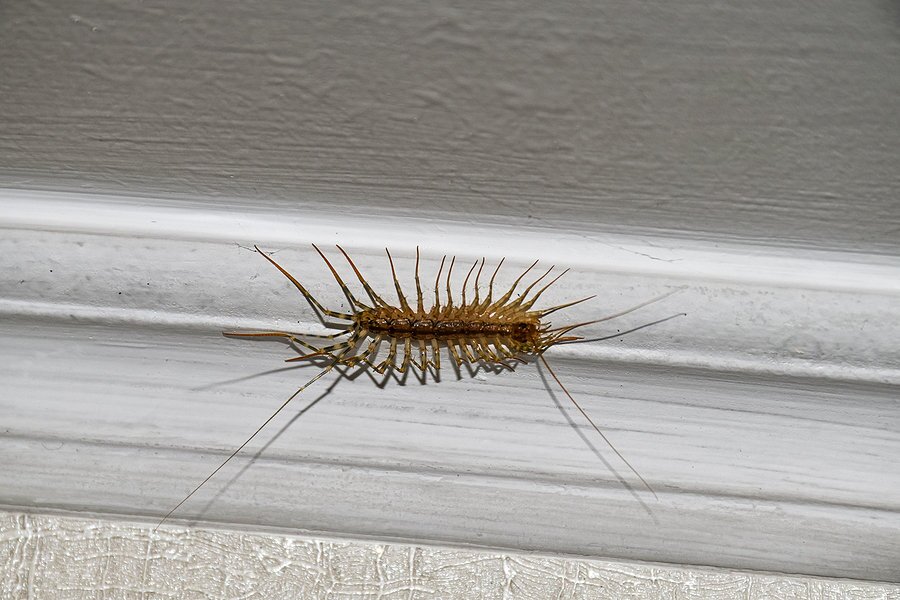READY TO GET STARTED?
REQUEST A FREE ESTIMATE
Fill out the form below or call (888) 466-7849 for a free, no-obligation estimate.

Centipedes are a common household pest. Although they range in color, the most common species are grayish-yellow with dark stripes. Most centipedes grow up to 1″ long although the largest species has been recorded at a whopping 6″ in length. Each body segment on a centipede contains a pair of legs and they can range anywhere from 15 pairs to 177 pairs. They also have hairy antennae which they can use to detect their prey. Centipedes can move fast – up to 16 inches per second!
Centipedes can be found in a variety of climates – desert, temperate, wetlands, and even forests. Like most pests, they are in search of three things: food, moisture, and warm shelter. For this reason they will often make their way into your home. Centipedes thrive in dark, cool, damp environments that are close to a food source. They can often be found under rocks, logs, and under debris. They are nocturnal, coming out at night to search for prey that includes beetles, roaches, crickets, spiders, worms, and silverfish. Unlike their millipede cousins, they do not eat wood or decaying material.
Centipedes will make their way indoors through drains, holes, cracks, gaps, and poorly sealed windows and doors. Once inside, they are commonly found inside cement walls, in boxes, under clutter, in drains, and under sinks in kitchens, bathrooms, and basements. What makes centipedes take up refuge inside your home? Centipedes are attracted to homes by three major things:
While centipedes are capable of biting and injecting venom (which they use to subdue their prey), they rarely bite humans and, when they do, their bites don’t usually puncture the skin. Centipedes are considered beneficial to have around since they help keep other pest populations in check.
Centipedes can be prevented by getting rid of the things that are attracting them in the first place. Seal any cracks, holes, and gaps in foundations and around doors and windows. Repair any leaks and get rid of standing water. Keep piles of wood and leaves away from your home. Declutter your house, garage, and basement. Keep pests under control with routine pest control service.
If you have a problem with centipedes or any other pests, contact your local pest control company for a comprehensive analysis to help identify any pest problems and recommend the most appropriate treatment options.
Why Identifying Spiders is Important for Prevention
Identifying Three Common Roaches
9 Warning Signs Of A Rodent Infestation
Categories